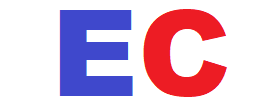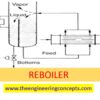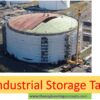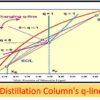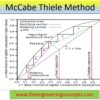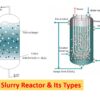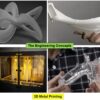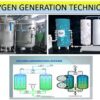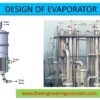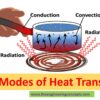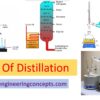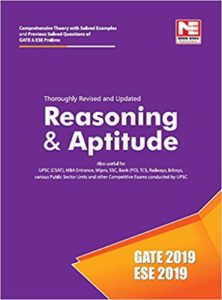PROCESS CONTROLLERS AND ITS TYPES
What is a Process Control, and what are Controllers?
Process Control is a stream that combines various disciplines that use “control systems or controllers” to achieve the production of certain levels of efficiency, which mainly includes a safe and economical process that is not possible to achieve manually.
Controllers are a machine which eases the process. Technically it minimizes the difference between the process variable and the setpoint. Controllers are a primary yet essential part of process control engineering, and they are used in all complex control systems.
Process Control Systems and Controllers have mainly used all chemical engineering industries from mining, pharmaceutical, dredging, oil and gas, textile to pulp and paper manufacturing, and power generating plants to control temperature, flow, and level of the fluids.
Controllers have several essential uses, which are mentioned below:
- Controllers improve the accuracy by decreasing the error.
- As the accuracy improves, it makes the system more stable.
- Controllers also reduce the offsets produced by the process control system.
- Controllers control the maximum overshoot of the process control system.
- Controllers reduce the noise signals produced by the process control system.
- Controllers help speed up the slow response of an over-damped system.
Also Read :1. Types of Control System 2. Control Loop
What are the various types of controllers?
Controllers are widely classified into two main types:
- Continuous Controllers
- Discontinuous Controllers.
Continuous Controllers:
In continuous controllers, the controlled variable (also known as the manipulated variable) can have any value within the controller’s output range. There are three primary continuous controllers, viz.
- Proportional controllers.
- Integral controllers.
- Derivative controllers.
To increase the efficiency of processes, these controllers are at times used in combinations, viz.
- Proportional and integral controllers (PI Controller)
- Proportional and derivative controllers (PD Controller)
- Proportional integral derivative control (PID Controller)
Discontinuous Controllers:
In this case, the controlled variable, i.e., the manipulated variable, changes between several different values. Based on these different values of the manipulated variable, the controllers are distinguished between the controllers’ positions. Discontinuous controllers operate on a straightforward technique of switching final control elements.
Let us now discuss the above-mentioned controllers in detail:
Proportional Controllers: Proportional controllers are controllers in which the control variable, also known as the manipulated variable of the output, is directly proportional to the error, which is the difference between the setpoint and the process variable. Proportional controllers can be used when the deviation between the control variable and setpoint, i .e., the input and the output should not be large, and it should not be sudden. The mathematical equation for the proportional controller can be written as:

A(t) α e(t)
By removing the proportionality sign it becomes,
A(t) = Kp. e (t)
Where Kp is the proportionality constant, also very commonly known as the “controller gain.”
It is suggested that the value of Kp should always be greater than 1, which helps in amplifying and detecting, and rectifying the error.
Advantages of the proportional controller:
There are two main advantages of this controller, the first – it helps stabilize the system by reducing the error, and the second – when the over-damped systems give a slow response, the use of a proportional controller makes the process faster.
Disadvantages of the proportional controller:
Proportional controllers can increase the maximum overshoot of the system, and we might get some offsets.
Integral Controllers: Integral controllers are controllers in which the control variable, also known as the manipulated variable of the output, is directly proportional to the integral of the error, which is the difference between – the setpoint and the process variable. An integral controller is also known as a reset controller, which usually eliminates the steady-state error that the proportional controller causes. The mathematical equation for the integral controller can be written as:

A(t) α ᶴ e(t) dt
By removing the proportionality sign it becomes,
A(t) = Ki. ᶴ e(t) dt
Where Ki is the integral constant, also very commonly known as the “controller gain.”
Advantages of Integral Controller:
As we know, Integral Controllers are called reset controllers; it is because they can return the controlled variable to the same set point as it was in the beginning by following a disturbance.
Disadvantages of Integral Controller:
The only disadvantage of an integral controller is that it makes the system unstable because of its slow responses to the error that is produced.
Derivative Controllers: Derivative controllers are controllers in which the control variable, also known as the manipulated variable of the output, is directly proportional to the derivative of the error, which is the difference between – the setpoint and the process variable. The derivative controller senses the rate of change of the error signal because of which is also called a rate controller. The mathematical equation for the derivative controller can be written as:

A(t) α d e(t)/ dt
By removing the proportionality sign it becomes,
A(t) = Kd. d e(t)/ dt
Where Kd is the integral constant, also very commonly known as the “controller gain.”
Advantages of Derivative Controller:
The only advantage of a derivative controller is – it improves the transient response of the process control system.
Disadvantages of Derivative Controller:
The two main disadvantages of this controller the first – it never improves the error, and the second – it amplifies the noise signals and produces saturation effects.
Proportional and Integral Controller: Proportional and Integral Controller (PI) is a combination of the proportional and integral controller. In this case, the output signal is the sum of proportional and integral of the error signal. Proportional and Integral Controller (PI) is a commonly used controller in process control systems to correct errors between – the setpoint and the process variable. The mathematical equation for the PI controller can be written as:
A(t) α ᶴ e(t) dt + A(t) α e(t)
By removing the proportionality sign it becomes,
A(t) = Ki. ᶴ e(t) dt + Kp. e (t)
Where Kp and ki are proportional and integral constants, respectively.
Proportional and Derivative Controller: Proportional and Derivative Controller (PD) is a combination of proportional and a derivative controller. In this case, the output signal is the sum of proportional and derivative of the error signal. A Proportional and Derivative Controller (PD) contains the proportional controller’s damping and the derivative controller’s prediction of a process error. The mathematical equation for the PD controller can be written as:
A(t) α d e(t)/ dt + A(t) α e(t)
By removing the proportionality sign it becomes,
A(t) = Kd. d e(t)/ dt + Kp. e (t)
Where Kp and Kd are proportional and derivative constants, respectively.
Proportional Integral Derivative Controller (PID Controller): Proportional plus Integral plus Derivative Controller (PID Controller) is a combination of proportional, integral, and derivative controller. It is mostly used in industrial process control applications to regulate process variables like level, flow, speed, temperature, pressure, and other process variables. These controllers use a feedback control loop mechanism to control all the process variables. These controllers are the most accurate and stable ones. The mathematical equation for the PID controller can be written as:
A(t) = Kd. d e(t)/ dt + Kp. e (t) + Ki. ᶴ e(t) dt
Article Written By : Shravani Kharote
Article Source: Wikipedia; ScienceDirect; KEB; LibreTexts; OMEGA
ImageSource : tutorialspoint
Also Read:
Liquid Level Flow Control Loop
Heat Exchanger Temperature Control
Piping and Instrumentation Diagram – P&ID
How to choose betwwen PLC and DCS systems for process industries ?
What is the Difference Between HMI and SCADA?
What is SCADA ? How does SCADA Works?
What is Programmable Logic Controller / PLC ?
